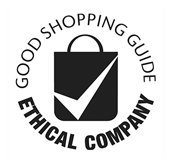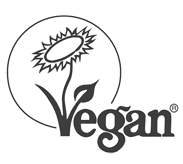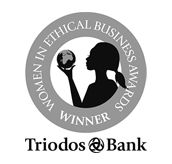How to spot greenwashing and woke-washing in fashion
How is the fashion industry using greenwashing and woke-washing and how you can take action
Earth Day 2022 is upon us, and the world wide web is alive with messaging in support of environmental protection. But how much of this is just greenwashing?
International awareness events are created for precisely that purpose: to raise awareness and drive positive change. However, in industries dominated by multinationals with barely an ounce of environmental credential to speak of, days such as Earth Day are often band wagon to jump on.
So, in an age of social media, rife with greenwashing and woke-washing, how do we separate the wheat from the chaff?
We hear from Climate Justice Activist & Campaigner Hermione Berendt as she unearths the raw truth about greenwashing and woke-washing in one of the most destructive industries in the world – the fashion industry.
The environmental and social footprint of fast fashion
The fashion industry is one of the biggest and most influential industries in the world. Nearly everyone on the planet wears clothing daily, but for many of us, it’s about more than just putting on practical pieces of cloth. The clothes we wear have long been used as a form of self-expression, a social-identity marker, for empowerment and for pushing boundaries. However, the fashion industry is also inextricably linked with environmental and social exploitation. This has been the case for hundreds of years but has recently been exacerbated by the rise of fast fashion. Examples of the fashion industry’s damaging practices include exploiting factory workers and slave labour. Not to mention the environmental impact: polluting waterways, contributing to carbon emissions, and the dumping of clothes by Global North countries in the landfills of countries in the Global South.
The fashion and apparel industry is a key player in the climate crisis. Textile production contributes more to climate change than international aviation and shipping combined. If the industry continues the way it does, the apparel industry’s climate change impact is expected to rise 49% by 2030.
The biggest injustice of all is that fashion’s most exploited workers usually fall under the category of most affected people and areas (MAPA). This means that they will also be impacted the most by the climate crisis, yet have contributed the least to it.

The fashion industry needs to tell the ACTUAL truth
Campaigners for environmental and social justice in the fashion industry often get frustrated at the lengths that the brands will go to distract and misinform us about their negative impacts. There is little or no transparency and accountability for many of the awful practices going on behind the scenes. Instead, fashion brands hide behind positive initiatives and deflect the blame.
The industry is both influential and greatly influenced by social listening. It needs to stay current and relevant to keep people buying things. For example, the general public is becoming increasingly concerned about human rights. Especially younger generations are more and more aware of their role in the climate crisis. Brands have responded to this by co-opting our concerns, whilst simultaneously exacerbating the problems.
This can be done for example by using buzzwords from activist spaces. These tend to be corporate buzzwords, or words we have come to associate with the concepts of ethical living and environmentally friendly products. Examples of such buzzwords are: ‘sustainable’, ‘earth friendly’ or ‘conscious’. Using certain imagery; associating the brand with people we align with or disguising their wrongdoings behind positive actions are other ways of distracting us from the truth.
These techniques are known as greenwashing and woke-washing. They give brands ‘a social licence to operate’. This means that, despite their wrongdoings, we, the community, are giving them social permission to conduct business.
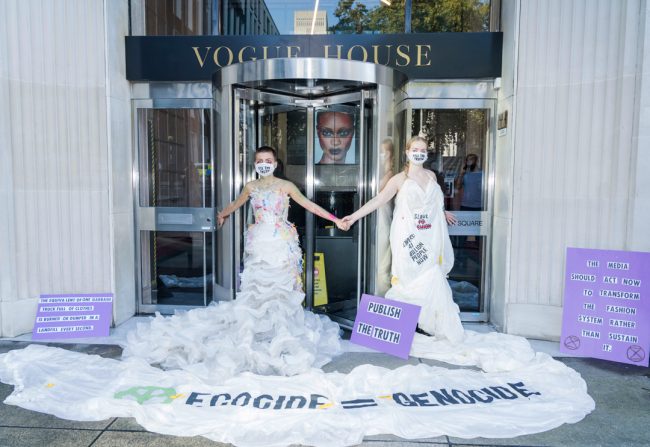
What is ‘Greenwashing’?
Greenwashing is used in a sentence like: “That shop’s window display is total greenwashing.”
The term ‘greenwash’ was coined in 1986 by environmentalist Jay Westerveld. Greenwashing refers to the action of “trying to convince people that you are doing something good for the environment by being involved in small, environmentally-friendly initiatives, especially as a way of hiding your involvement in activities which are damaging to the environment.” It was originally used to talk about misleading advertising in the fossil fuel industry. Today greenwashing is used much more widely.
Once you know a bit more about greenwashing, I promise you, you’ll start to notice it everywhere – billboards, in-store campaigns, fashion magazines, and company websites. Trust me, the fashion industry is rife with it. Here are some examples:
Examples of greenwashing in the fashion industry
Recycling initiatives in fast fashion shops
On the surface, these seem like a great idea, and they could and should be. However, there are a few reasons why many of them are a big load of greenwashing. For starters, many of these recycling initiatives put the onus on shoppers to ‘recycle’ their way out of the problem rather than addressing the reason why we have a problem in the first place.
What we need is for the fashion industry to slow down. We need to stop overproducing clothing made from new and raw materials. Each piece of clothing has a footprint from the beginning to the end of its life. Let’s take polyester, for example. Polyester is one of the most common materials found in textiles today, widely used in clothing collections by both high street and luxury brands. Fossil fuels are the biggest contributor to climate change, yet fashion brands continue to rely heavily on them.
On the face of it, these initiatives appear to be paving the way for closed-loop systems, which are imperative for a sustainable fashion industry. However, it is not clear how much of the clothing and fabric put into the recycling bins is used to make clothes for the brand. A lot of mixed material items cannot be recycled. Where do these items end up?
By using these bins, brands are also encouraging throwaway culture. They are offering ‘guilt-free’ disposal of clothing whilst simultaneously encouraging people to buy more. You may have noticed that shops also offer incentives like money-off vouchers for every bag of clothes you bring in.
Creating ‘environmentally friendly’ ranges
It has become very ‘fashionable’ for fashion retailers to launch ‘sustainable collections’ to appeal to an increasingly eco-conscious market. Some might argue that they are providing more accessible sustainable options and raising awareness through their campaigns. We would argue that what they are doing is misleading us into thinking we are shopping consciously.

These ‘environmentally friendly’ collections are not what they outwardly appear. For example, the label ‘organic cotton’, without a certification like GOTS, WFTO, or Fairtrade logo doesn’t always mean it has been sustainably grown. There are no regulations. Cotton is an incredibly water-intensive crop. When produced at the rate and quantities required by fast fashion, it still has a big environmental footprint, organic or not.
The growing of cotton has also been linked with exploitation and forced labour for years. Without the certifications mentioned above, it cannot be guaranteed the people growing, picking, and preparing the cotton have been treated equitably. If a brand can produce an organic cotton item at a super low price and fast rate – something just isn’t right. They’re either making a loss or they’re cutting corners somewhere. Ultimately, this means they aren’t committing to making the changes we desperately need.

The problem with recycled plastic
‘Earth friendly’ recycled plastic bottle ranges are becoming more and more common with both fast fashion and luxury brands. For some items, such as gym or swimwear, there are few, if any, sustainable alternatives to synthetics. In this case, a fabric made from recycled plastic bottles can be a more sustainable alternative. However, this is not the case for any other clothing items. Yet brands will still make them and promote them as a sustainable products.
In their recent report Synthetics Anonymous – Fashion brands’ addiction to fossil fuels, Changing Markets highlight a few reasons why material made from recycled PET bottles is problematic. Using materials from other waste streams, such as PET bottles, to fulfil ‘recycled material’ targets is a false circular solution. You can recycle plastic bottles around 15 times into new plastic bottles. However, recycling them into clothing is usually a one-way ticket to landfill especially if the clothing contains a mix of materials. In a circular economy, materials should be reused and recycled like-for-like to prevent waste and unnecessary extraction of virgin materials.
Furthermore, a lot of the clothing isn’t made from 100% recycled material, just a small percentage. The Competition and Markets Authority in the UK have identified several key concerns for greenwashing in the fashion industry, including:
– the use of vague terms such as “eco” and “sustainable”.
– brands labelling products as “recycled” or “organic” when the percentage of materials this applies to is relatively low.
– brands marketing small, seemingly sustainable capsule collections in a way that implies their entire range is sustainable. The irony is that by doing this they are admitting that most items sold in their shops are not sustainable or made from earth-friendly materials.
What’s more, by using terms like “eco” and “organic” in their marketing, they are intentionally making it incredibly confusing for shoppers. It is difficult to know what you are actually buying. It also makes it harder for to find smaller, more well-intentioned brands.
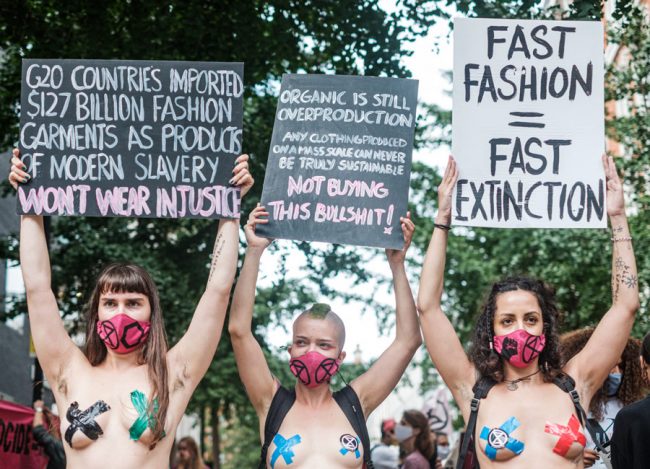
What is ‘woke-washing’ and how is it used in the fashion industry?
Woke-washing is also a verb and can be used in a sentence like “I can’t believe they got X to appear in their campaign promoting racial justice, when their whole company is built on the exploitation of Black, Indigenous, and People of Colour. That is serious woke-washing.”
Teen Vogue explains woke-washing as ‘ethically problematic companies us[ing] social movements [like racial justice movements, feminist movements, and LGBTQI+ movements] to increase sales without addressing how their business is complicit.’
The term caught on after being used by Aja Barber in an online lecture for the Slow Factory Foundation’s open education program.
Examples of woke-washing in the fashion industry
Cashing in on “female empowerment”
We see big woke-washing campaigns on International Women’s Day every year. Slogans that ‘empower women’ adorn t-shirts and marketing campaigns. Yet, what they don’t shout about is that the fashion industry is still exploiting and endangering their female workers all over the world. We’ve seen human rights violations, injuries or even deaths as well as sexual violence scandals come to light time and time again. From global South countries like Bangladesh and China, to global North countries like the UK and the USA.
Most billionaire CEOs of fashion brands are men, yet Fashion Revolution tells us that the garment industry is and has historically been one of the most female-dominated industries in the world. Today, more than 70% of garment workers in China are women. In Bangladesh that proportion rises to 85%, and in Cambodia as high as 90%. The workers are producing clothes for some of the most profitable companies in the world. They receive poverty wages and work under dreadful conditions, often having to undertake an excessive amount of overtime.
Gendered violence is rife in garment factories. The Justice for Jeyasre campaign held a global vigil last year for Jeyasre Kathiravel. She was an Indian Dalit woman garment worker and union member. Jeyasre organised against gender-based violence and harassment at a major Indian garment manufacturer that supplies to American and European fashion brands. She faced months of sexual harassment by her supervisor before she was murdered.

Fundamental rights are missing in sweatshops
Expoitation in the fashion industry isn’t a secret, yet many garment workers who make clothes for big brands aren’t even allowed to unionise and campaign for better treatment. The Asia Floorwage Alliance campaign for Freedom Of Association and to end the repression, retaliation, and discrimination faced by women who campaign for their rights.
Although ‘fast fashion’ is commonly targeted for its heavy reliance on sweatshop labour, it should be acknowledged that these practices exist across the industry, from budget to luxury fashion. In fact, it is not uncommon to find workers in the same factory producing both designer garments and their high street imitations. Many brands outsource to factories rather than owning the factories themselves. This allows them to distance themselves from anything that comes to light.
This doesn’t stop at the production process either. Exploitation and abuse are rife throughout the fashion world, from the modelling industry to unpaid internships.
Capitalising on the global pandemic
Another example of woke-washing in the fashion industry was the way brands capitalised on the Covid-19 pandemic. Making and selling masks, selling clothes that made references to social distancing, encouraging people to stay at home and offering discounts to ‘key workers’. Meanwhile, they were cancelling orders from factories leaving people without money to support their families.
Spearheaded by Remake our world, the #PayUpCampaign put public pressure on the brands to pay factories what they owed so that they could pay their workers. Many big brands did not stand with their suppliers during this time. Across just 31 facilities investigated, 37,367 workers were denied $39.8 million in wages to which they were entitled. This means that each garment worker was denied about five months’ worth of wages. These figures are merely the tip of the iceberg. WRC has identified an additional 210 garment facilities across 18 countries where 160,000 workers are owed an estimated $171.5 million since the outbreak of Covid-19.
Those who were kept on had to work without adequate PPE. A major fashion brand Boohoo was selling social distancing slogan t-shirts, while simultaneously being accused of breaking Covid-19 guidelines for photoshoots. They were also accused of having ties to suppliers forcing staff to work while sick in their factory in Leicester. Whilst most of the UK was in lockdown, their factory in Leicester locked its doors, but the factory kept running, with people earning £3 an hour.
Using activists and advocates in campaigns to promote clothing
Another commonly used woke-washing technique is working with social justice or environmental justice influencers. Some activists refuse to work with problematic brands. Others see it as a valuable opportunity for them to bring their campaigning to huge, global platforms and into the mainstream. Many of the worst climate offenders and exploiters of labour also have the biggest platforms and the largest marketing budgets.
We’ve seen activists in marketing campaigns, we’ve seen them as ambassadors, we’ve seen them wearing the clothes in fashion magazines and on social media.
This is frustrating because, whether consciously or not, they are endorsing the brand and giving them a social licence to operate by aligning the brand with their own values. An example of this is when a brand that notoriously exploits its garment workers is working with a racial justice activist on a diversity campaign to empower women of colour. Or they’ve teamed up with a climate activist who’s wearing their new ‘sustainable collection’ in an Instagram post.
Brands know that influencers or ‘celebrity endorsers’ help to build brand image and loyalty. Studies have shown that if someone views an influencer as credible and trustworthy, they are more likely to buy the item they are promoting. By aligning the brand with the values and ideologies of an influencer, makes them look progressive. Meanwhile, what the brand is projecting outwardly doesn’t accurately represent their corporate practices behind the scenes. Misleading marketing makes it harder for us to make the right choices when we are shopping.
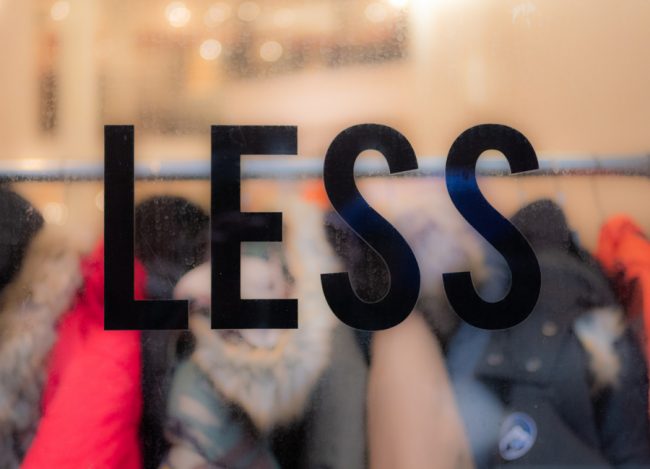
Holding the fashion industry to account and fighting for justice
It’s not surprising that brands are trying to disguise what they are doing, because the truth ain’t cute! By hiding the brands’ corporate practices, they are fooling us into thinking that they are taking real steps to reduce their climate impacts or the exploitation of people in their global supply chains.
Once you’ve started learning about greenwashing and woke-washing techniques you will be able to spot them and believe me, you’ll spot them everywhere. It may seem cynical, but it’s important to cast a critical eye over any claims especially the big brands make around ethics and sustainability.
We need more education within the fashion industry and more external regulations. Brands need to take real accountability; drastically reduce the amount of clothing they produce and invest in closed-loop systems. Anything less is not good enough.
Real transparency is essential if we are going to transform the fashion industry into one that is just and equitable. I campaign with Extinction Rebellion Fashion Action, and other organising groups, to push the fashion industry to tell the truth. To tell the truth about their role in the climate and ecological emergency and the ongoing human rights abuses.
Transparency isn’t just disclosing the things you are doing well, it’s also about acknowledging and taking ownership for the things you aren’t doing well. No matter what the big brands claim to practise, they are mainly sticking to business as usual. If we are to truly transform the fashion industry, we need governments and the fashion industry to tell the truth. We need them to commit to the ambitious action we desperately need.

How can you take action to call out greenwashing and woke-washing in the fashion industry?
Anyone can take action and hold brands accountable. It’s very easy to call out greenwashing and woke-washing on social media. See a campaign or post that doesn’t seem to add up? Comment on it or share it and demand for the truth. You can also support Fashion Revolution’s campaign during Fashion Revolution Week – using the hashtags #WhoMadeMyClothes and #WhatsInMyClothes.
People like to put the onus on shoppers to make more conscious choices: shop less, choose second hand over new and support small, ethical and sustainable businesses. However, when it comes down to it, regulation needs to come from the top. Huge brands and fashion houses have the money to invest in transformation, but sadly, we can’t trust them to get us out of this problem. We need everyone on board, from global governments to small scale artisans. We need to work together to create climate action plans that are proportionate to the emergency we find ourselves in.
There is hope, but hope must go hand-in-hand with action! Everyone has the power to make a difference. We all need to come together to transform the fashion industry. We need to move from exploitation into justice and equity. It’s time to start organising!
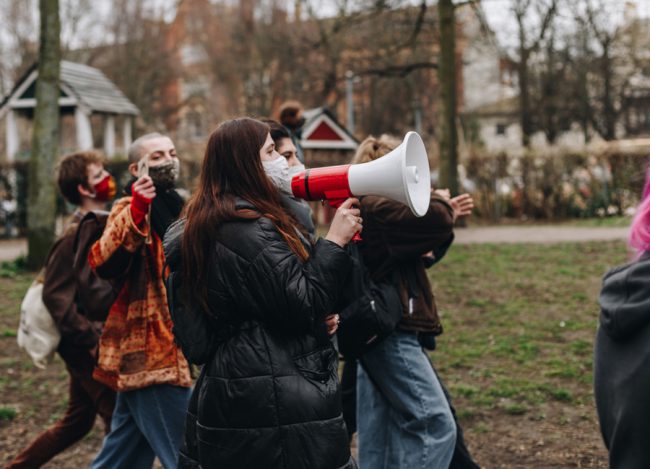
Some campaigning groups you can join and take part in:
Extinction Rebellion Fashion Action
Remake Our World
Fashion Revolution
Labour Behind the Label
Fashion Declares
Other places you can learn more are:
Aja Barber: Consumed
Wardrobe Crisis Academy
Lucy Siegle: To Die For: Is Fashion Wearing Out The World?
Tansy Hopkins: Stitched Up: The Anti-Capitalist Book of Fashion
Remember Who Made Them podcast
Common Threads podcast
Fossil Fashion
The Slow Factory
Born in Brighton in 2002, and made right here in the UK, Mooncup is an original pioneer of plastic-free periods. You can read more about our impact here.
Did you enjoy this article? Head to this page’s footer to sign up to our mailing list to be the first to hear about our blogs!
Also on the Mooncup blog:
How is the Mooncup® environmentally-friendly? 10 reasons
Cal Major, Paddleboarder & #RealMooncupUser, shares one way to help tackle ocean plastic pollution
Meet the teens activists fighting the war against plastic pollution
The pandemic is no excuse to give up our fight against plastic pollution
How to choose the best menstrual cup for you
What kind of person uses the Mooncup?
The world after COP26 – is there still hope?
Credit for header image & final image – Natasa Leoni




